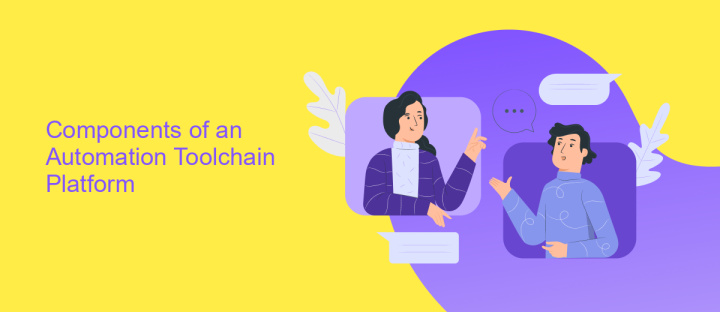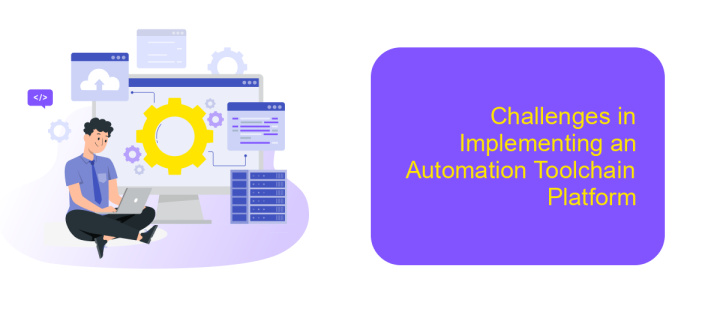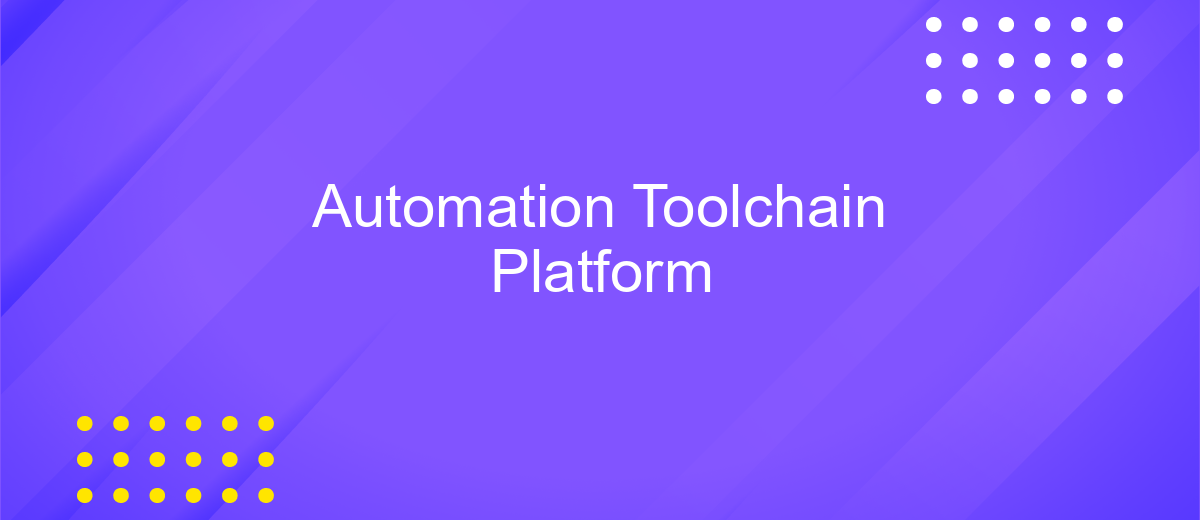Automation Toolchain Platform
In today's rapidly evolving technological landscape, the Automation Toolchain Platform has emerged as a critical asset for businesses seeking efficiency and innovation. By seamlessly integrating various automation tools and processes, this platform empowers organizations to streamline operations, reduce manual tasks, and accelerate project delivery. As industries increasingly prioritize digital transformation, understanding and leveraging the capabilities of an Automation Toolchain Platform is essential for maintaining a competitive edge.
Introduction
In the rapidly evolving landscape of technology, the Automation Toolchain Platform emerges as a pivotal solution for streamlining processes and enhancing productivity. Designed to integrate seamlessly with existing systems, this platform offers a comprehensive suite of tools that automate repetitive tasks, reduce human error, and accelerate development cycles. As businesses strive to remain competitive, embracing automation is no longer an option but a necessity.
- Efficiently manage and orchestrate complex workflows.
- Enhance collaboration across development and operations teams.
- Improve scalability and flexibility of IT infrastructure.
By implementing an Automation Toolchain Platform, organizations can unlock new levels of efficiency and innovation. This platform not only reduces operational costs but also allows teams to focus on strategic initiatives rather than mundane tasks. As automation continues to shape the future of work, adopting a robust toolchain platform ensures that businesses remain agile and responsive in a dynamic market environment.
Components of an Automation Toolchain Platform

An Automation Toolchain Platform consists of several key components that streamline and enhance the software development lifecycle. One crucial element is the version control system, which manages code changes and collaboration among team members. Continuous Integration/Continuous Deployment (CI/CD) tools automate the process of testing and deploying code, ensuring rapid and reliable software delivery. Additionally, configuration management tools maintain consistency across various environments, reducing the risk of errors and downtime.
Another vital component is the integration platform, which facilitates seamless communication between different tools and services. For instance, ApiX-Drive enables efficient integration by connecting multiple applications without requiring extensive coding, thereby simplifying workflow automation. Monitoring and logging tools provide real-time insights into system performance and help identify issues before they escalate. Lastly, security tools safeguard the platform by detecting vulnerabilities and ensuring compliance with industry standards, thus maintaining the integrity and confidentiality of data.
Benefits of Using an Automation Toolchain Platform

An Automation Toolchain Platform offers a comprehensive suite of tools designed to streamline and enhance software development processes. By integrating various automation tools, these platforms facilitate seamless collaboration among development teams, improve code quality, and accelerate delivery timelines. They enable organizations to manage complex workflows effectively, ensuring consistency and reducing manual intervention.
- Enhanced Efficiency: Automation toolchains automate repetitive tasks, reducing human error and freeing up resources for more strategic activities.
- Improved Collaboration: These platforms provide a centralized environment where team members can easily share updates, track progress, and resolve issues.
- Scalability: As projects grow, automation toolchains can scale to accommodate increased workloads without compromising performance.
- Cost Reduction: By minimizing manual labor and optimizing processes, organizations can significantly cut down operational costs.
- Continuous Integration and Delivery: Automation ensures that code is consistently integrated and delivered, enhancing software reliability and user satisfaction.
Incorporating an Automation Toolchain Platform into your development process not only optimizes productivity but also fosters innovation. By leveraging its capabilities, teams can focus on delivering high-quality software solutions faster and more efficiently. This strategic advantage is crucial in today’s competitive landscape, where time-to-market can define success.
Challenges in Implementing an Automation Toolchain Platform

Implementing an automation toolchain platform presents several challenges that organizations must navigate to ensure success. One of the primary hurdles is the integration of diverse tools and technologies, which often lack standardization and compatibility. This can lead to difficulties in creating a seamless workflow, as different teams may rely on various tools that do not easily communicate with each other.
Another significant challenge is the cultural shift required within an organization. Automation can change the way teams operate, necessitating new skills and approaches. Resistance to change can be a major barrier, as employees may be hesitant to adopt new technologies or fear job displacement.
- Data security and compliance concerns, particularly in industries with strict regulations.
- Scalability issues as the organization grows and the toolchain needs to expand.
- Maintaining continuous updates and support for the toolchain components.
Addressing these challenges requires a strategic approach, involving stakeholder engagement, continuous training, and a robust change management process. Organizations must also prioritize flexibility and adaptability to ensure their automation toolchain platform evolves alongside technological advancements and business needs.
Future of Automation Toolchain Platforms
The future of automation toolchain platforms is poised for transformative growth as businesses increasingly seek efficiency and scalability. These platforms will evolve to offer more comprehensive integration capabilities, enabling seamless connectivity between diverse software tools. As artificial intelligence and machine learning continue to advance, automation toolchains will become more intuitive, offering predictive analytics and intelligent decision-making support. This evolution will empower organizations to optimize their workflows, reduce manual intervention, and enhance productivity.
Furthermore, the rise of low-code and no-code solutions will democratize access to automation, allowing non-technical users to build and customize their workflows with ease. Platforms like ApiX-Drive will play a crucial role in this landscape by offering versatile integration services that simplify the connection between applications. By providing user-friendly interfaces and robust automation features, ApiX-Drive and similar services will help businesses harness the full potential of their toolchains. Ultimately, the future of automation toolchain platforms promises a more interconnected and efficient digital ecosystem, driving innovation across industries.
FAQ
What is an Automation Toolchain Platform?
How can an Automation Toolchain Platform benefit my business?
What types of tasks can be automated using an Automation Toolchain Platform?
How difficult is it to set up integrations within an Automation Toolchain Platform?
What should I consider when choosing an Automation Toolchain Platform?
Time is the most valuable resource in today's business realities. By eliminating the routine from work processes, you will get more opportunities to implement the most daring plans and ideas. Choose – you can continue to waste time, money and nerves on inefficient solutions, or you can use ApiX-Drive, automating work processes and achieving results with minimal investment of money, effort and human resources.

